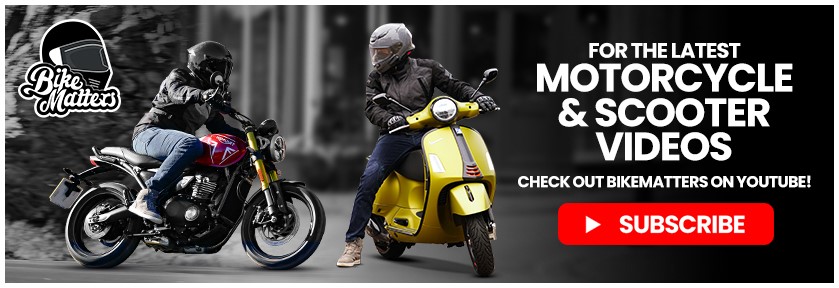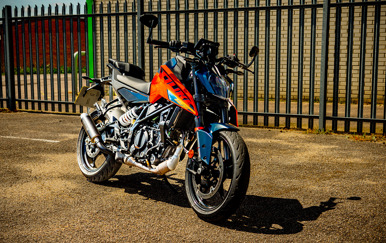Having taken the step to learn to ride a motorcycle or moped on the road, you have to complete the Compulsory Basic Training (CBT). Whether you've already got yours and are waiting for sunnier days, or you're looking at your next steps on a bike, I've got 6 tips for things you may have forgotten since first completing your CBT.
If you are 16, you can only ride up to a 50cc vehicle, be it geared or automatic. At 17 or older, you can ride up to a 125cc vehicle.
Check out your local training schools – some are better than others – and make your choice.
1. Highway code

This isn’t strictly for after you’ve passed….. So many students turn up for their CBT and when asked if they have studied the Highway Code, they look a bit blank! PLEASE BE AWARE THAT IF YOU HAVE NOT STUDIED THE HIGHWAY CODE, YOU SHOULD NOT BE TRAINED! It is a legal requirement for any training body to ensure you have, or they are quite within their right to refuse to train you.
Think about it logically…. If you were going for your first driving lesson in a car, would you have read it? When I ask this question, most people said that they would. You are taking a motorised vehicle on the road. Does it matter whether it’s a car or motorcycle? Read your Highway Code…please!
2. Observations

Okay, so you’ve passed your CBT. You can now legally ride on the highway. Lovely. Enjoy but please remember what you have learned regarding observations on the road. They aren’t there to make life difficult or be over-cautious – they are there to help keep you safe. A Life-Saver is just that.
3. Peer pressure

Oh, the joy! There you are out with your mates on your bikes and having a great time. Good for you. BUT! They may have been riding on the road for a lot longer than you and when you all get together, there’s always the urge to show who’s best, or quickest, or, daftest!
Take your time. If one of your mates wants to do something a bit crazy…let them. Don’t be dragged into situations where your lack of experience may put you in danger. So…enjoy, but please keep your cool.
4. Clothing

OMG! (Quick rant!) You know what you should wear. Even on a restricted moped, please put the right gear on. Shorts and a tee-shirt and no gloves aren’t the way forward.
“I don’t need all that gear – I’m only going down the road to visit a mate and I can’t go any faster than 30 anyway so what’s the problem?”
Hmmm. Better to be HOT than HURT! Summers coming up. So what if you’re a bit warm? Better to have sweaty skin than no skin. Do you think 30 is slow? Okay, next time you’re in a car doing 30 – open the door and jump out. No? Don’t like that idea? But that’s what you’re proposing by not wearing your protective clothing. Just do it.
5. Signals

Now a lot of people, but not all, tend to take a CBT as a form of transport to and from school, college or work. They don’t want to take their full test, or they are only using a bike until they turn 17 and can take their car licence. Fair enough. However, this means that you are only travelling along the same road day after day and that’s when you get complacent.
Why do we signal? It’s to let other road users know our intention. Even if your road positioning isn’t great, give other people a clue about what you are about to do. And use them correctly. Put them on well before your turn (of course, taking into consideration any other junctions prior to yours). I see so many riders on ‘L’ plates that either don’t bother to signal at all (especially when turning left) or don’t put them on until they are actually turning. Can be dangerous – so inform early.
6. Distance

Keep your distance. Please. You need time to react to a situation developing ahead of you. Don’t sit on the bumper or rear wheel of the vehicle ahead. You may have got away with it for months, but one day you won’t – so don’t do it!
So…. Think. Show the world you are an intelligent biker. Take some pride in your own skill but most of all be safe.
Enjoy the upcoming riding season!
It is worth noting that if you have completed your CBT and are looking for further advice on training, please head over to our complete guide on motorcycle training!
Please be aware: This article was created prior to the corona virus outbreak.
A Bit About Jan Waters
Jan has been a motorcycle instructor for over 10 years and counting, and she's been riding bikes even longer - since she was 16! Her latest achievement is passing her Advanced Motorcycle Test with ROSPA, and gaining the highest Gold Standard!
Her love for all things bike means she is always seeking ways to improve and expand her already diverse knowledge, riding anything and everything, whether that's a 50cc moped or her beloved Triumph Street Triple 675.





